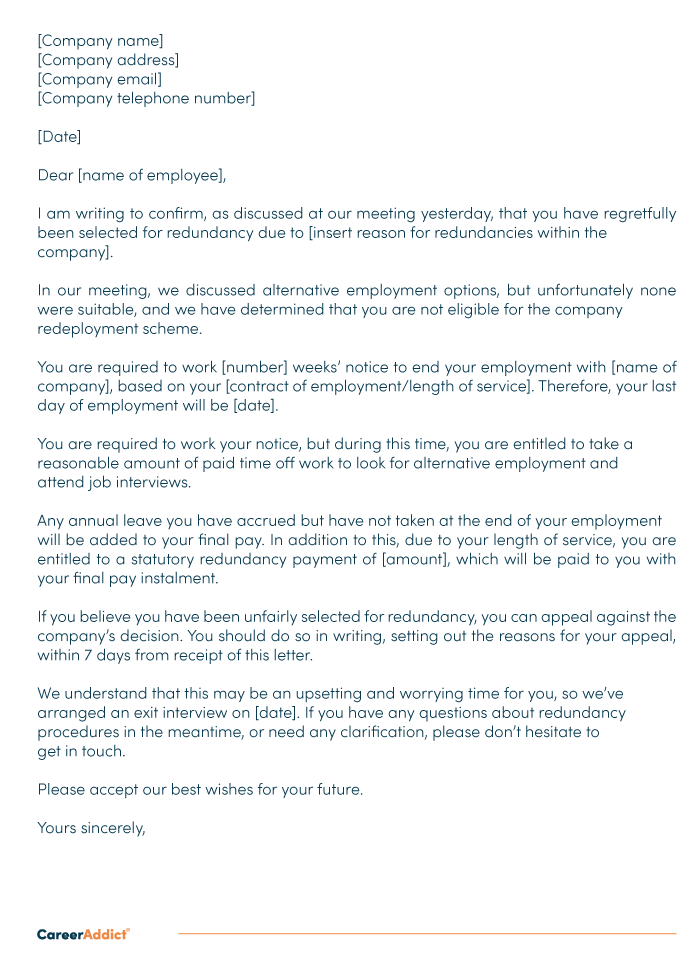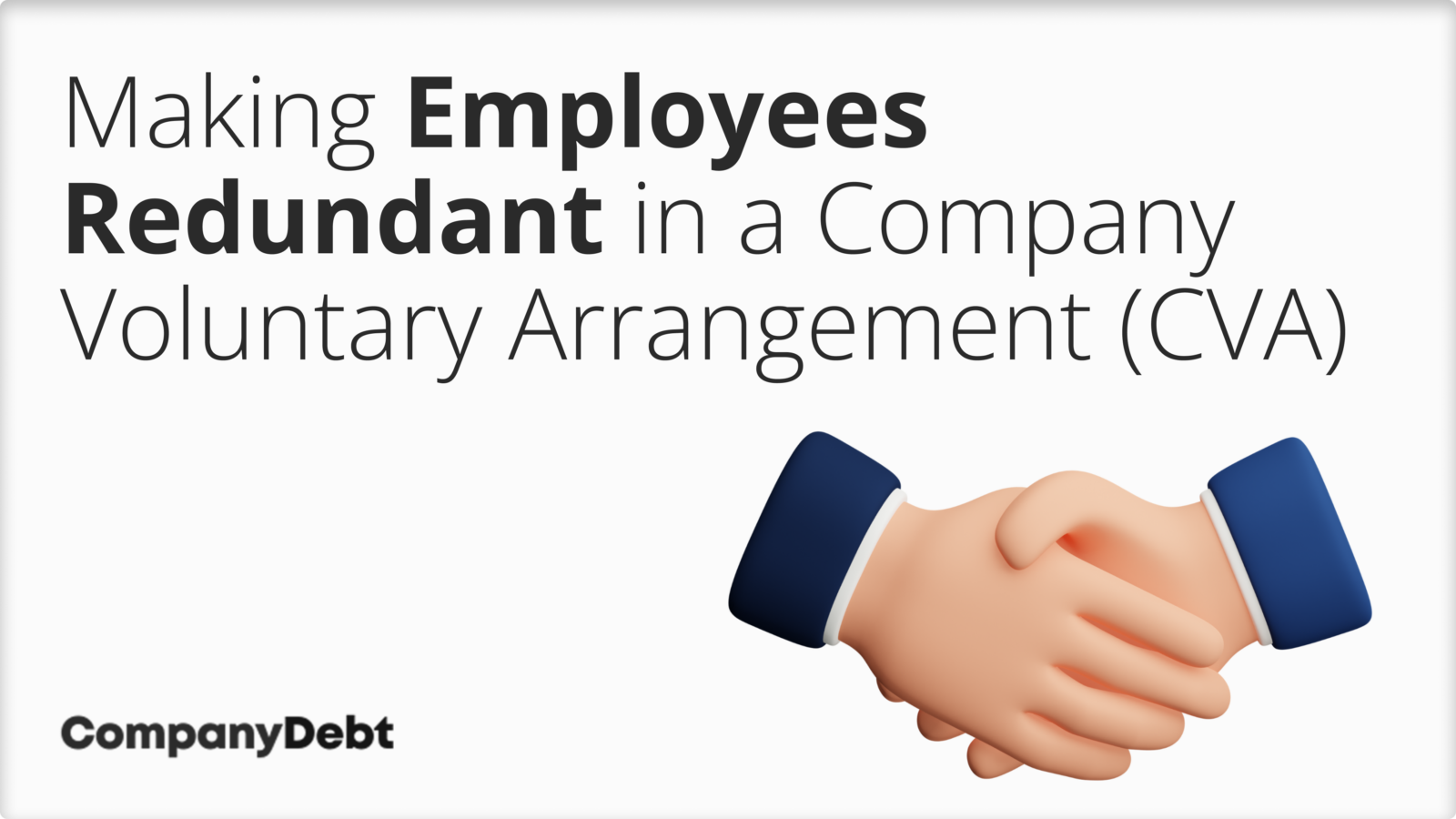Redundancy Pay If Company Goes Bust: Recognizing Your Privileges in the UK
Wiki Article
Checking Out the Operational Dynamics of Company Redundancy and Its Long-Term Sustainability

Redundancy Techniques for Service Connection
In order to guarantee continuous operations, services have to execute reliable redundancy techniques for company continuity. Redundancy in this context describes the replication of vital parts or features within a system to alleviate the effect of potential failures. By integrating redundancy methods, companies can improve their resilience against disruptions triggered by various factors such as all-natural catastrophes, tools failures, or cyber-attacks.
One typical redundancy method is the implementation of backup systems and data storage remedies. This includes creating matches of necessary information and systems that can be turned on in instance of a key system failing. Additionally, organizations can develop repetitive communication networks and power sources to preserve connection and operations throughout unpredicted events.
Additionally, cross-training workers to do several duties within the company can offer as a valuable redundancy strategy. This makes certain that important tasks can still be executed also if key employees are unavailable because of ailment or other reasons. On the whole, effective redundancy methods are vital for businesses to promote functional connection and reduce the effect of prospective disturbances.
Impact of Redundancy on Organizational Durability
Provided the important duty redundancy methods play in making sure service connection, exploring the impact of redundancy on organizational resilience becomes critical for comprehending the holistic operational dynamics of a firm. Business strength describes an entity's ability to adapt to interruptions, recuperate from troubles, and change when essential while maintaining core functions. Redundancy, when tactically implemented, can substantially contribute to enhancing a company's resilience in the face of unexpected difficulties. By having back-up systems, employees, or processes in location, business can better endure shocks and continue operations with very little disruption.Additionally, redundancy can boost employee morale and confidence, recognizing that there are backup strategies in location to resolve unpredicted scenarios. This complacency can cause boosted performance and a much more favorable work setting. Additionally, redundancy can promote innovation and creative thinking within an organization as employees really feel equipped to take calculated threats, knowing that there is a safeguard to support them in instance of failure. On the whole, the effect of redundancy on organizational strength is profound, forming the long-term sustainability and success of a company.
Stabilizing Effectiveness and Versatility in Redundancy
Attaining a harmonious stability between functional effectiveness and flexible flexibility is an essential obstacle in the calculated implementation of redundancy within companies. Reliable operations are crucial for maintaining efficiency and cost-effectiveness, making certain that resources are made use of efficiently. Nonetheless, excessive emphasis on effectiveness alone can lead to rigidity, making it tough for companies to adapt to unanticipated changes or obstacles. On the various other hand, adaptability permits companies to react nimbly to advancing scenarios, cultivating development and resilience. Yet, excessive flexibility without a strong functional foundation can result in inadequacies and inconsistency.To stabilize effectiveness and flexibility in redundancy preparation, companies need to carefully analyze their functional requirements, market dynamics, and tactical goals. Carrying out lean techniques can enhance effectiveness by getting rid of and streamlining processes waste, while promoting a society of versatility and continual renovation can boost flexibility. Additionally, spending in cross-training programs and robust communication networks can aid grow a functional labor force with the Click Here ability of managing varied jobs throughout periods of change. Inevitably, discovering the appropriate stability in between effectiveness and versatility is critical for developing a durable and sustainable organization in the face of unpredictability.
Long-Term Sustainability With Redundancy Planning
To ensure enduring viability and security, companies have to tactically straighten their redundancy planning with long-lasting pop over to this web-site sustainability objectives, consequently balancing functional efficiency with adaptive flexibility. Long-lasting sustainability via redundancy planning entails greater than simply temporary cost-cutting steps. It calls for a detailed calculated method that prepares for future difficulties and possibilities. Business ought to check out redundancy not as a responsive service to instant issues however as a proactive method for long-term success. By integrating redundancy planning with sustainability purposes, organizations can develop a durable framework that can withstand different market variations and internal changes.
Aggressive Steps for Sustainable Company Workflow
Just how can firms proactively boost their functional sustainability for lasting success? Implementing positive procedures is vital for companies intending to ensure sustainable operations. One crucial method is to buy modern technology and technology to improve procedures, lower waste, and stay affordable in the market. Embracing sustainable methods such as decreasing energy usage, lessening carbon footprint, and maximizing source use can not only benefit the environment yet also lead to cost financial savings over time.Furthermore, cultivating a society of continual renovation and understanding within the company can improve adaptability to changing market problems and consumer demands. Motivating employee participation in decision-making procedures and offering opportunities for professional growth can increase morale, performance, and general performance. Establishing clear objectives, keeping track of essential efficiency indications, and routinely evaluating progress are important parts of positive sustainability management.
Teaming up with providers, clients, and other stakeholders to promote sustainable techniques throughout the supply chain can produce a causal sequence of favorable impact - redundancy pay if company goes bust. By taking positive steps towards functional sustainability, business can build strength, drive development, and safeguard their long-term success in an ever-evolving service landscape
Verdict

In the world of business monitoring, the tactical deployment of company redundancy stands as a crucial yet intricate technique that requires a fragile equilibrium in between operational effectiveness and long-lasting viability. By dissecting the operational dynamics that underpin business redundancy and reviewing its more comprehensive ramifications for organizational resilience and flexibility, a nuanced understanding of how redundancy techniques can form the future trajectory of a firm begins to unfold.Provided the vital duty redundancy strategies play in guaranteeing company connection, exploring the effect of redundancy on business strength comes to be essential for comprehending the all natural operational dynamics of a business. Overall, the influence of redundancy on business resilience is profound, shaping the lasting sustainability and success of a firm.
In final thought, recognizing the functional characteristics of company redundancy is vital for making certain long-lasting sustainability.
Report this wiki page